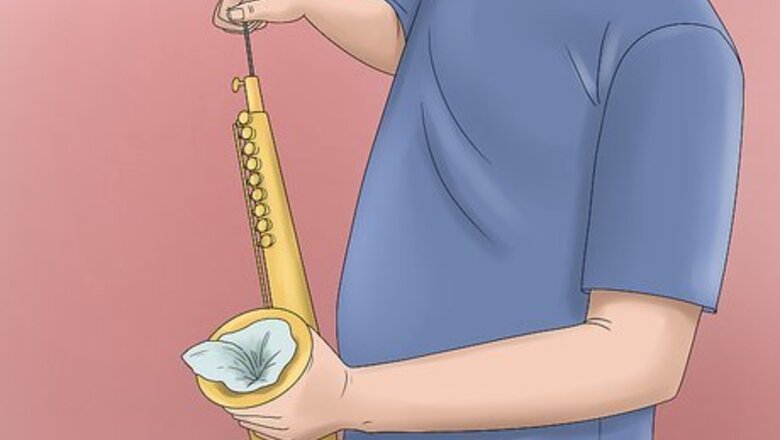
views
Cleaning the Interior
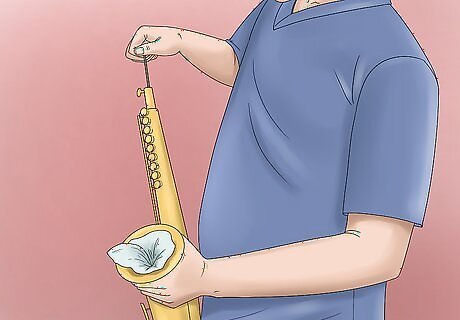
Swab the body. Most saxophone cleaning kits come with a brush or cloth on a long string with a weight on the opposite end. Put the weighted end into the bell of the saxophone and turn the sax upside down. Bring the weighted end through the body and come out the narrow end. Gently pull the swab through the body several times. Swabbing helps dry the interior so that pads are not damaged, inhibits bacteria growth, and removes any build-up of foreign particles from foods, beverages or saliva in the instrument. It is not unusual to see a slight green color on the pad after a few passes. This is normal and does not indicate rust or metal damage.
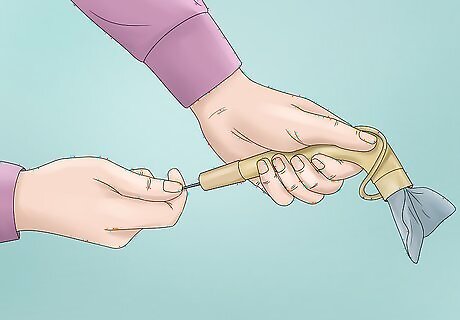
Swab the neck. Insert a flexible swab through the larger base opening on the neck, coming out on the narrow side to which the cork is attached. Brush out the inside thoroughly to remove any foreign particles. You can run water through the neck as well — just be sure that no water comes in contact with the cork, or it may swell and deform. Soaking with vinegar or brushing with detergent can help get rid of excess build-up.
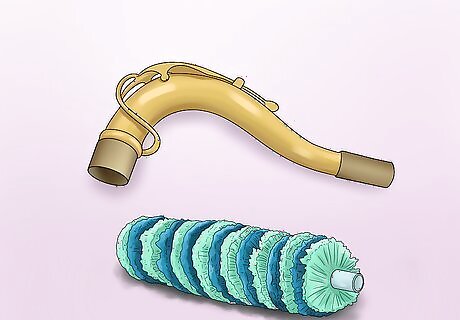
Use a pad saver. If available, these are helpful for removing any residual moisture. Make sure to use them after swabbing. Insert the pad saver through the body's narrow end. Let it absorb moisture for a few seconds, then remove. Some manufacturers make similar items such as "bell brushes" or "neck savers" for other parts of the saxophone. These are fine to use similarly if you have them, but not necessary for regular saxophone maintenance.
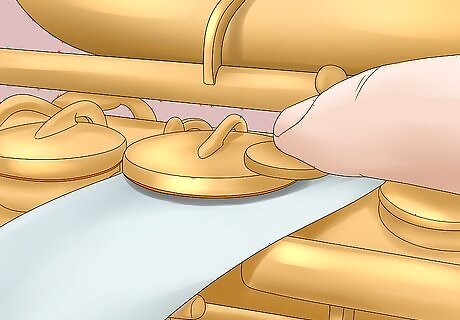
Inspect & clean the key pads. Check for sticky pads as you play the saxophone, and visually inspect under the pads for any wear and tear. Use wet cotton swabs or a thin piece of paper to clean where the pads meet the tone, removing any sticky residue. A little clean water should be enough to do the job.
Cleaning the Mouthpiece
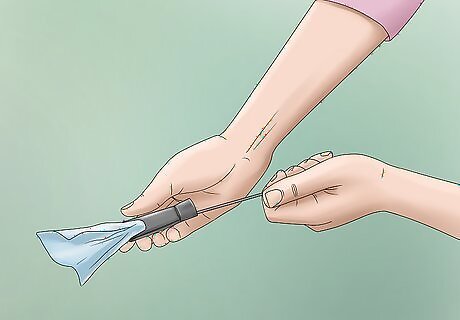
Clean your mouthpiece's interior. You'll want to clean the mouthpiece often, as it comes into contact with your mouth. Start out by removing the reed, then use a mouthpiece brush to remove any residue inside the mouthpiece. You can substitute a bottle brush or even a small toothbrush. Run cold or lukewarm water through the mouthpiece, then pull a clean, lint-free cloth through the mouthpiece to dry and remove any particles missed by the brush. Soaking in antiseptic mouthwash or detergent is helpful for particularly dirty mouthpieces.
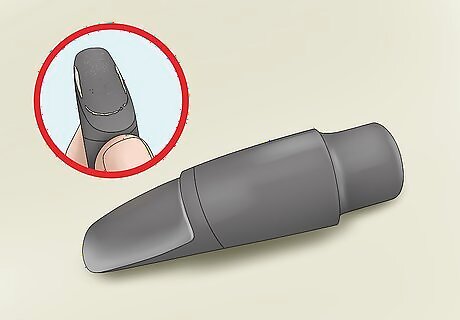
Sand out scratches. If you'd like to save a rubber or resin mouthpiece with light marks, use sandpaper or a fingernail sanding block. Start with the coarsest grit to remove the scratch. Progress to increasingly fine grits to smooth the mouthpiece out.
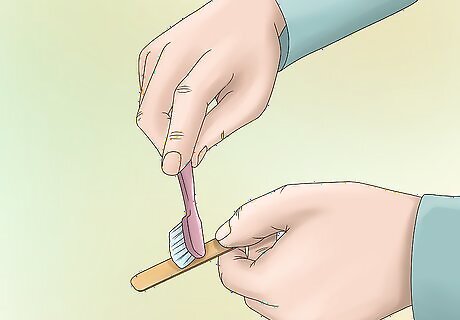
Clean the reed. The warm air you blow into it contains saliva, which provides a moist place for bacterial and fungal growth as well as food particles that damage the instrument. Wipe it down thoroughly after each use with a clean towel or cotton swab. This will stop bacteria and chemicals from congealing.
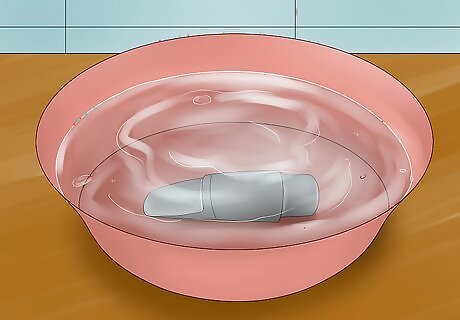
Deep clean as necessary. Soak especially dirty mouthpieces in water and a small amount of detergent or malt vinegar. Reeds can be soaked briefly in antibacterial liquids such as alcohol, mouthwash, or mild hydrogen peroxide. Allow the reed to dry before re-using.
Finishing Up
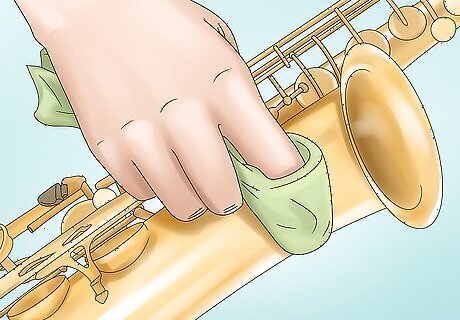
Polish the body. You can use just a brass lacquer polishing cloth. If desired, add a small amount of spray furniture wax. Avoid wash clothes, paper towels and any cleaning product not specifically made for brass instrument care.
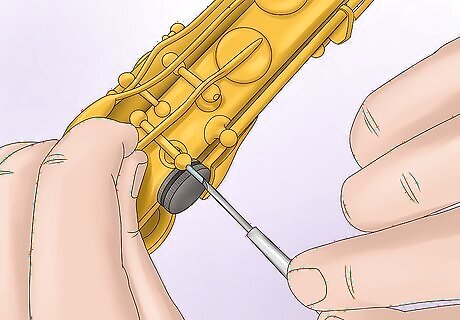
Tighten loose screws. You can safely tighten loose rod screws, but be careful not to over-torque them.
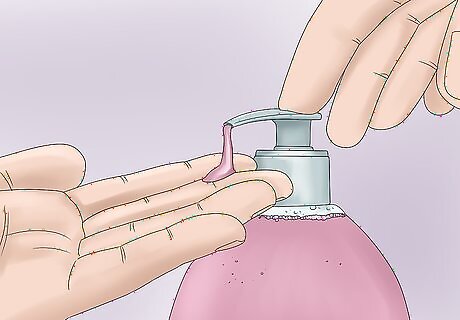
Clean your cleaners. Specialty swabs, pad savers and bell brushes can be washed lightly by hand with a small amount of soap. Each should last years if cleaned regularly.
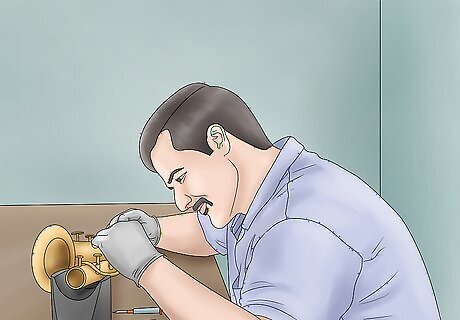
Reassemble your saxophone. It should look, feel, and play beautifully! When in doubt, consult a professional.




















Comments
0 comment